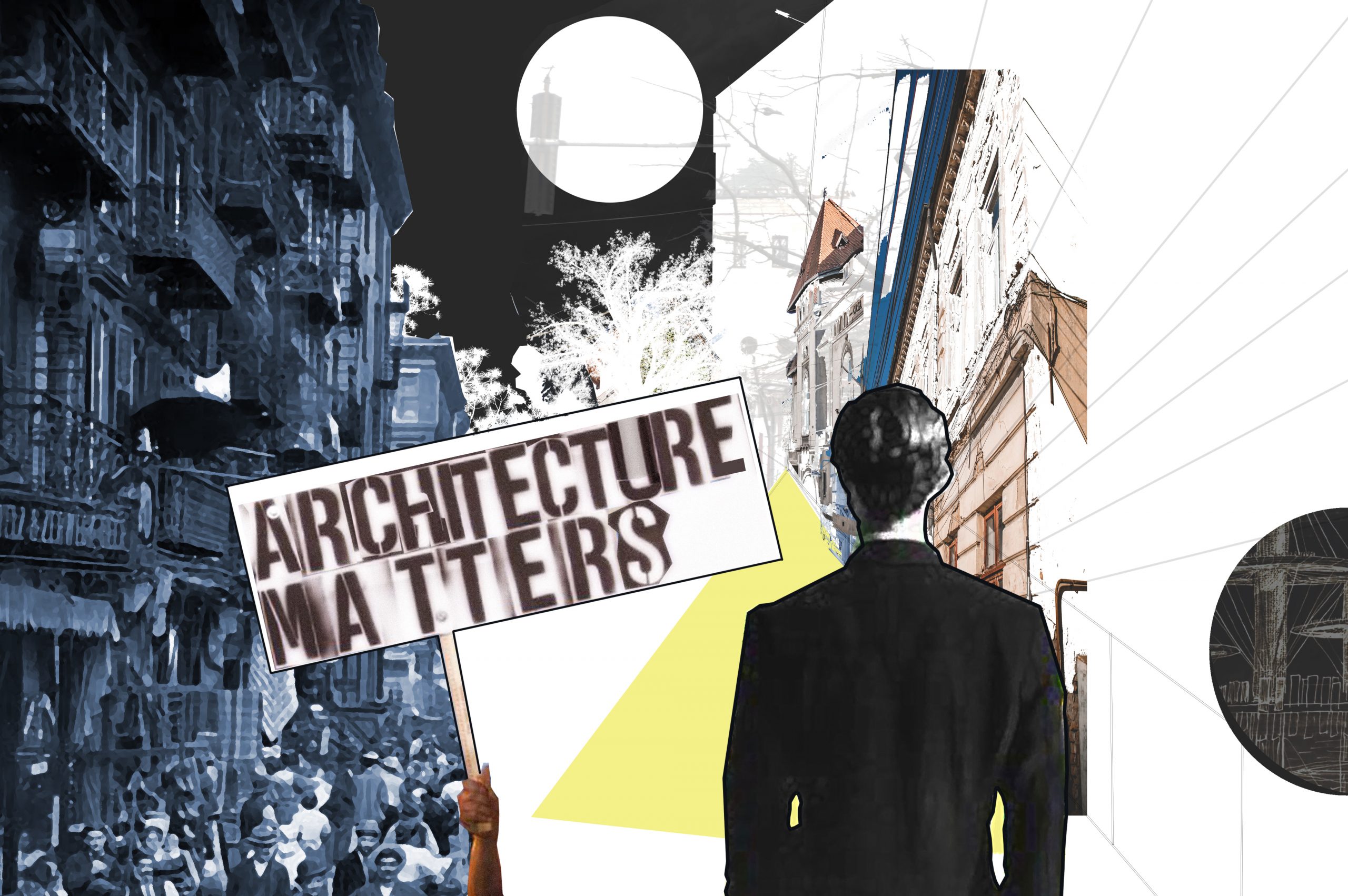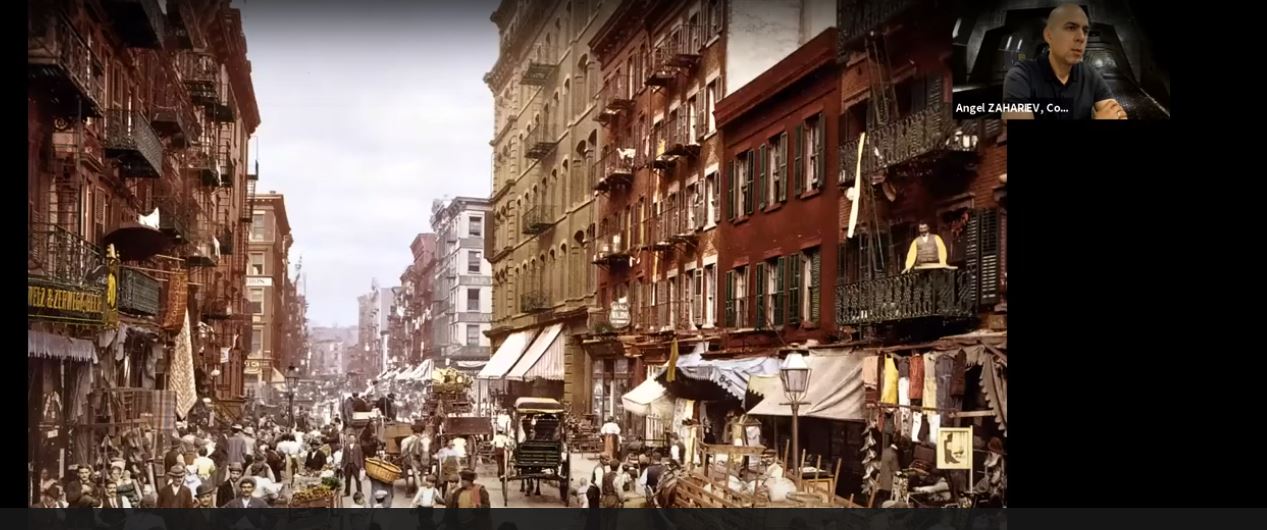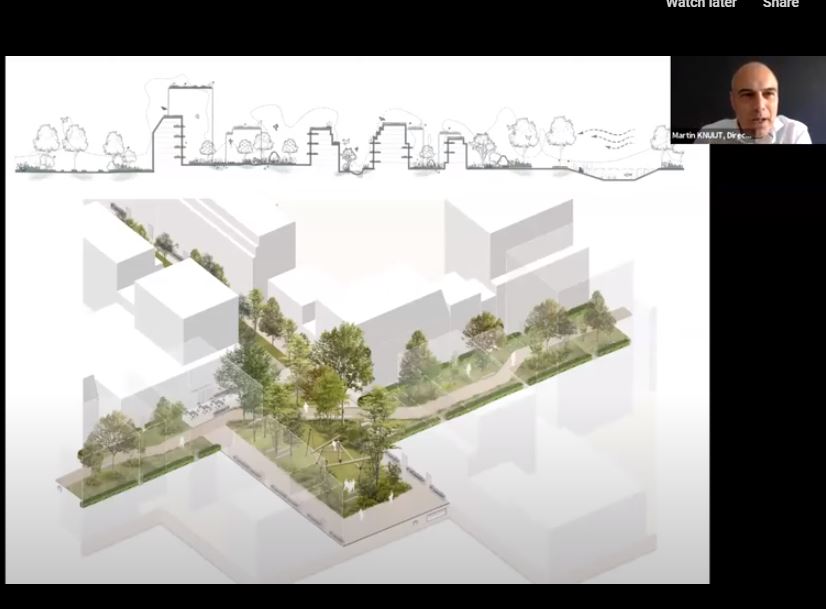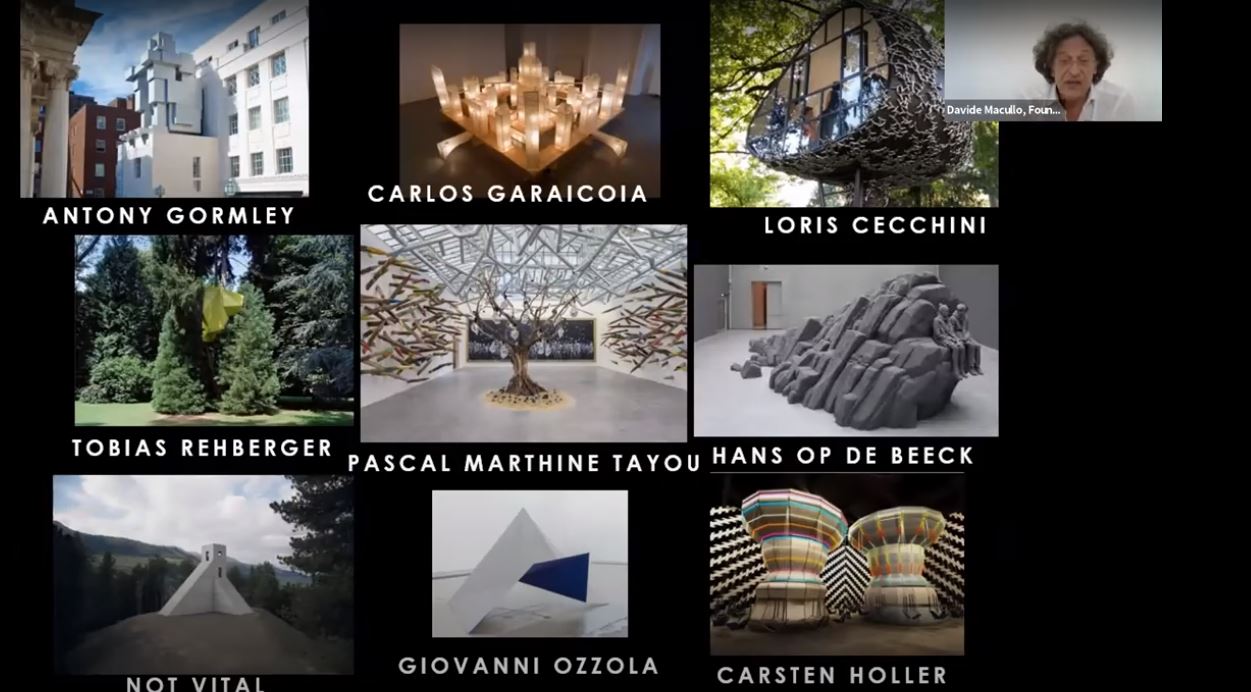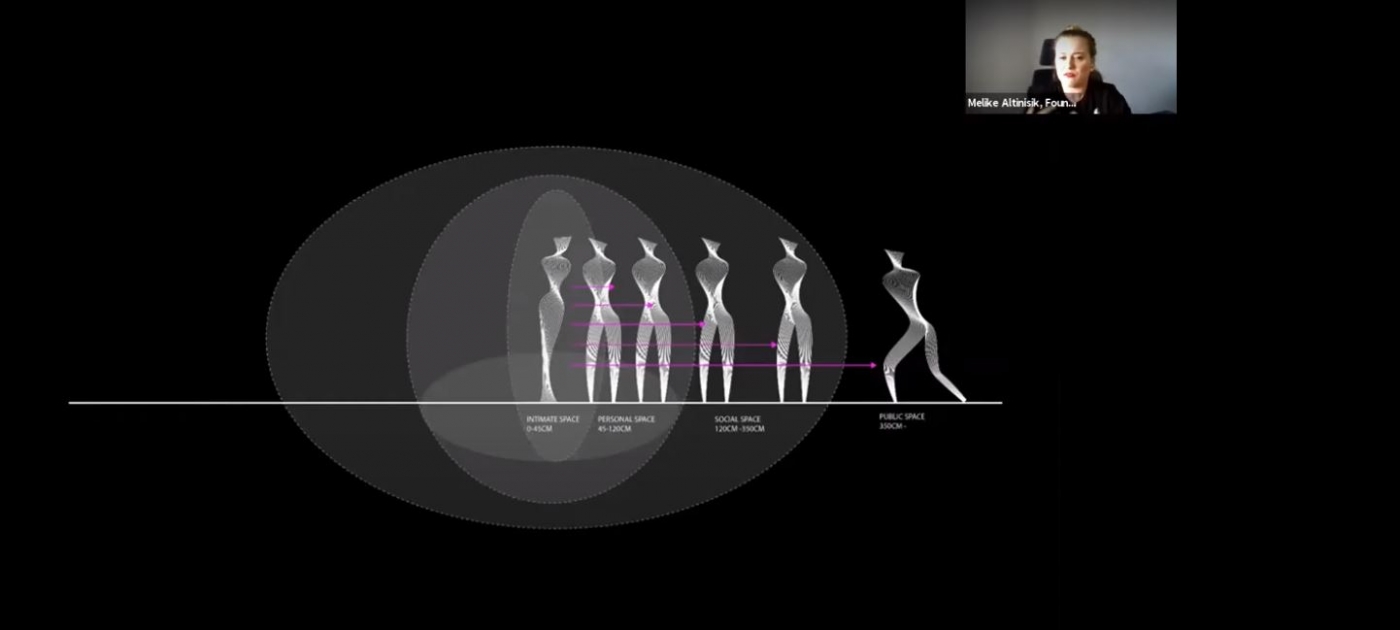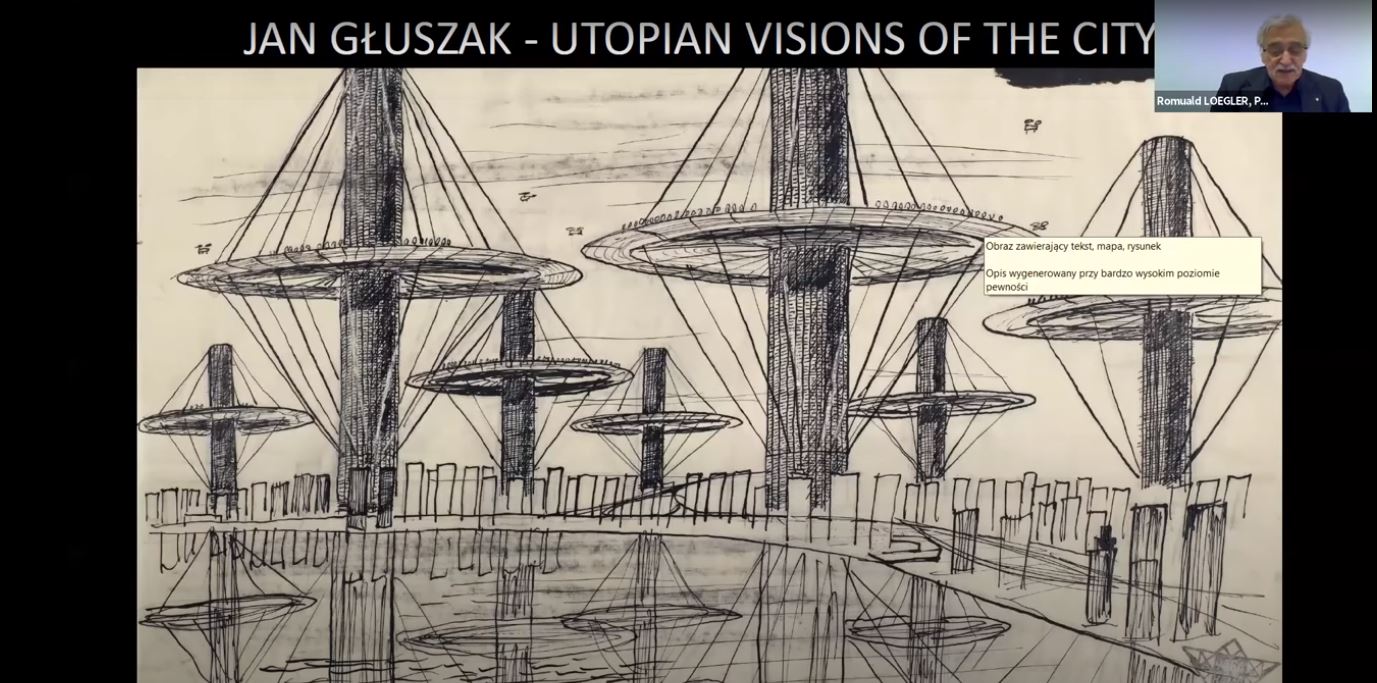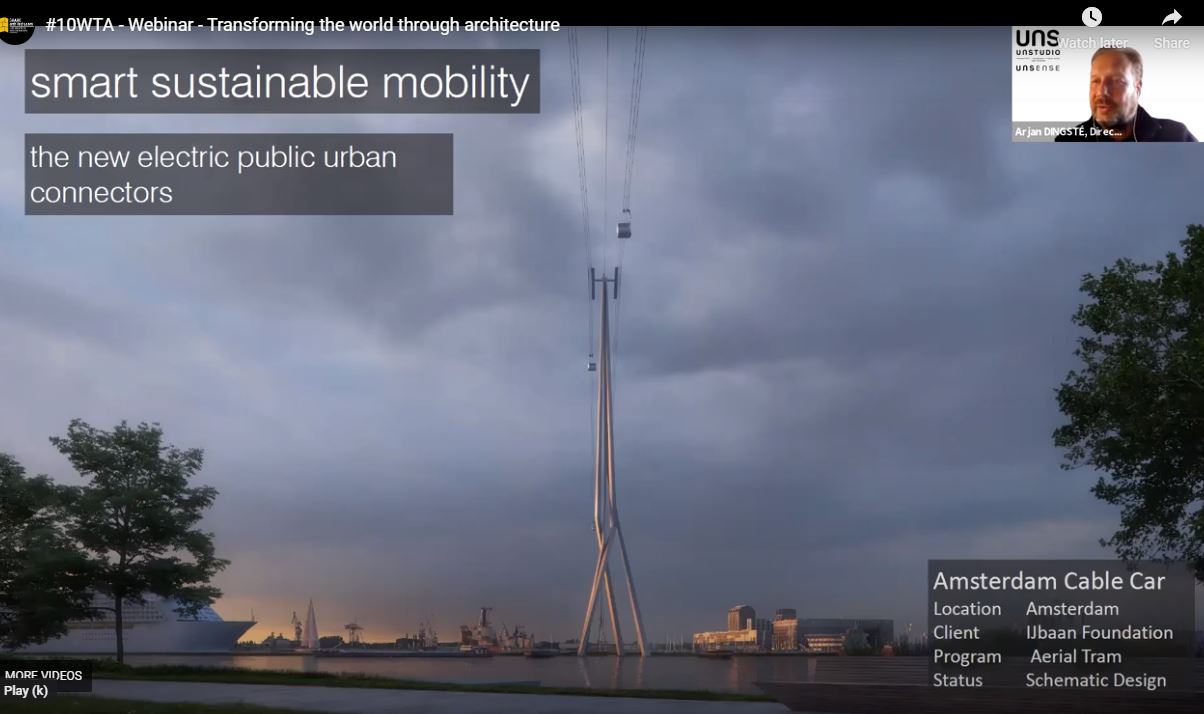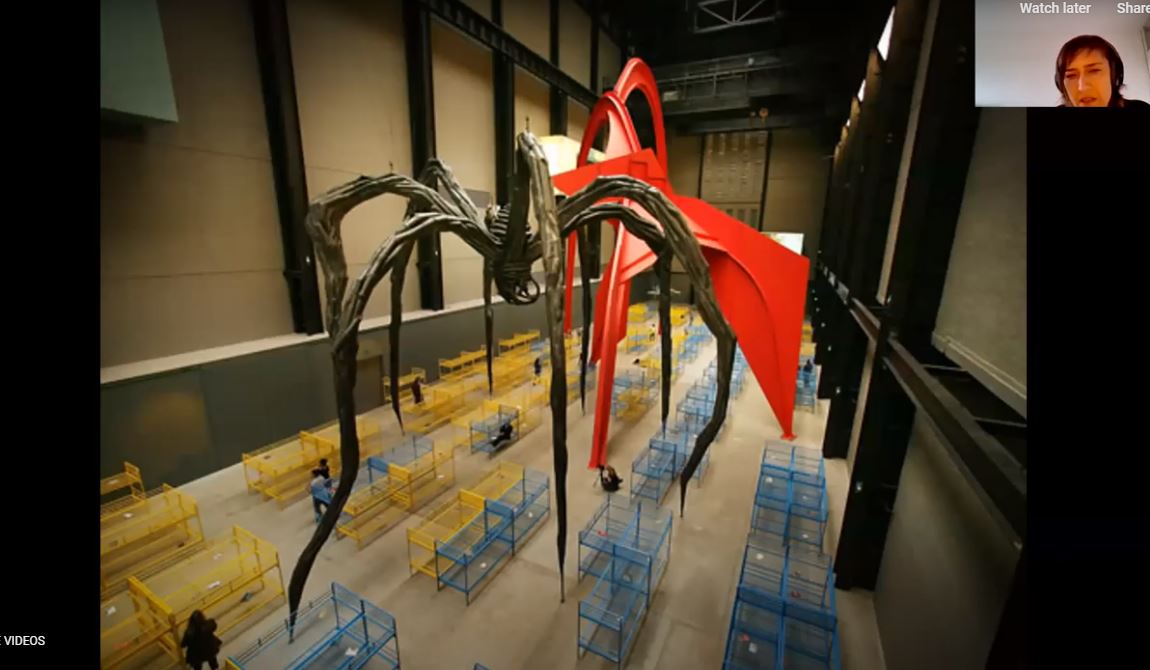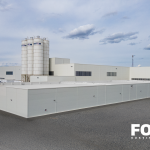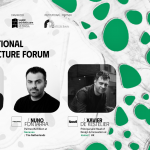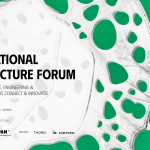Architecture matters. Towards antifragility in the Post Pandemic Era
By arch. Andreea Robu-Movilă, publisher share-architects.com
This article is written based on the 10 webinars organized by SHARE-Architects with more than 50 internationally acclaimed architects debating the topic: “Transforming the World Through Architecture in the Post-Pandemic Era”. The full version of these enriching presentations and resourceful debates can be found here: learn.share-architects.com
Changes seem faster than ever. But are we learning as fast? Lifelong learning must be one of the mechanisms that accompany us in the profession as the “social acceleration” (a concept by Hartmut Rosa) is an attribute of our XXI century. Hyperconnectedness and accelerated communication flow facilitate our complete availability and omnipresence will be a state difficult to be switched off. In fact, “the most important product of Industrial Societies is Speed” the philosopher Paul Virilio has declared.
But suddenly we had to pause. Abruptly. A whole world on pause. “We had to slow down to accommodate this lockout.”(Rena Sakellaridou) that gave us a short “time of reflection” (Fernando Menis). This was the first pandemic in the globalized world – a world that proved its fragility as the result of the globalization, of the dependency of supply chains when the displacement of resources has been proclaimed the measure of progress. As Christos Passas has observed, “one of the main characteristics of the human condition in the 21st Century is the shared experiences of global events that are captured by the worldwide audience. We find ourselves in the middle of yet another emergency and while as a society we respond collectively, on an individual basis we tend to feel weak and insecure.“
Vulnerability, both at an individual and collective level, has been tackled by our guest-speakers as a relevant topic of this period- “accepting vulnerability – this makes us more sensible and more sensitive to listen to everything around us. Accept our vulnerability and look for resilience. We felt vulnerable. We need to focus on the notion of resilience and on our ability to respond as fast as possible.” opinionated Rena Sekellaridou while Alfonso Femia considered that “Time, this time, has perhaps definitely reminded us that we are FRAGILE and also unable to build a responsible future. But if the incapacity depends entirely on us, on the theme of FRAGILITY, an AWARENESS must happen. But being fragile– he adds – does not necessarily mean being weak. We are not eternal, fragility is our essence.”
While fragility, at a personal level, is defining our human nature, our systems on which we rely on, should prove vigour and vitality when facing hazardous events that would eventually support our resilience and recovery. Antifragility, for Nassim Nicholas Taleb author of the homonym book, means more than resistance or robustness: resistance face the shocks and remains the same: antifragility mechanisms imply becoming better, therefore antifragile is suitable for non-predictive, aleatory and uncertain situations The reason Taleb considers antifragility more valuable than robustness is that it is easier to assess if something is fragile, measure it and envision strategies to ADAPT than estimate the occurrence of an unknown event.
The twelve points synthesis that will be presented below focus on the most recurrent themes identified in the discussions across all SHARE-architects May and June 2020 webinars. These general themes, that envisage antifragility possible strategies for the post-pandemic era, covers many of the topics that have been also approached by the architectural discourse in this period. “In history –mentioned Dietmar Eberle, there is a saying: only if there is a crisis will we have big progress. I have to apologize that I don’t understand the virus as a big problem, I understand it as a big challenge which gives us new opportunities, new duties, new futures.” The general tone is slightly optimistic, not because architects are utopians by nature but because the focus is on “starting over” (to begin to do something again, sometimes in a different, let’s say better way) and not only “re-start”.
“CITIES, THE MOST IMPORTANT PIECE OF ART HUMANS HAVE CREATED “
These words of Dietmar Eberle challenge the very essence of cities. Many of the prophylactic measures introduced in lockdowns and confinements all over the world, led to focusing of the general attention to what cities mean to us, and what is our role as architects in this big picture.
Invited to envision the NEW URBAN CONTEXT, Melike Altinisik proposes the following concepts: “Social Sustainability, Density balance, Distributed Flexible Systems, Micro-environments, Micro-communities.” For Taleb, the notion of bottom-up vs. top-down city management is related to antifragility, because what is from top-down makes the system more fragile in relation to the crisis response while what is from bottom-up is blooming in this type of circumstances.
The idea of Micro-cities inside Big cities was recurrent in many discourses, like in Angel Zahariev’s point of view “The urban concentration is a natural force that will bring people together but at the same time we will see the incentive of breaking cities in smaller communities “ or Andreas Vardas’s opinion “One thing to put on the table is how to decentralize the big cities.” For Sven Thorissen from MVRDV that proposed a vision ”Towards Resilient Urbanism”, the 15 Minutes City could be a possible answer to some urban issues, especially to those related to transportation and accessibility. “New mobility is very much related to apps, to availability and sharing” is the view of Martin Knuijt from OKRA for a post-pandemic scenario addressing urban planning, a view in the same note as representatives from UN Studio that rely on data analytics for a better understanding of the urban phenomena, as “smart sustainable MOBILITY” (Arjan Dingste) or DENSITY.
“Changes depend on understanding many dimensions of the city. The first things to change will be small and quite logical: like biking and offering better internet to everyone” believes Carol Ross Barney well known for her numerous projects for the City of Chicago that involved numerous participatory design strategies. The rise of public transportation systems that have increased during the last decades seems to be for the moment at a juncture: “The crisis transformed the public transportation system. This will lead to the enhancement of micro-transportation solution” expects Adam Hatvani in agreement to Frederique Monjan from Atelier Jean Nouvel who proposes “cycling and small buses to avoid agglomerations in one single vehicle”.
In this context, ”while we have changes in mobility we can have a new playfield: as the streets will not be occupied by cars but pedestrians, we can make everything green“ Martin Knuijt puts credits in. Rena Sekellaridou proposes these two key concepts: “Walking city: we should keep our cities dense but we should transform them into ‘walking cities’. We need to bring nature as much as we can in our cities, in our buildings, into our design.”
The question of density and land use raised the question of whether the population will migrate from big cities to periphery or rural areas. This discussion defined Dorte Kristensen‘s opinion that ”I am not sure whether being a condense city or being a village changes anything to the disease. So I think that this whole thing is more about behaviour than it is about how we build”. This view blinds to what Roland Bechmann from Werner Sobek pointed out that “in the next 40 years we need to double our building stock, meeting all the current needs we have and population growth. The carbon footprint is increasing with less density, therefore keeping density which means higher buildings offer easy access to infrastructure, and keeping density you can also preserve the green spaces around/across cities”. But with a mention: ”We need skyscrapers… but maybe we need better ones”.
Architects create situations that are predictions of the future. With one step here and there, the CITY TODAY and the CITY TOMORROW. For Romuald Loegler each utopian vision should not be dissociated from the local particularities: “Knowledge in this field is multi-faceted and coloured with countless shades of individual cases. There are no identical conditions, needs, and interdependencies that would lead to identical spatial decisions, without individual features. It is they that make cities magical places where people, streets, squares, parks, and buildings merge into an emotional whole, trying to give an answer or sign that would show us some reliable ways to shape the architecture of the future.“
REDISCOVERY OF HOME AS A CENTRAL STRUCTURE
This period made people more aware of the importance of our homes, as the centre of human life. The closure of outdoors has opened our eyes to the indoor prone to living. “What are the implications of staying home during a pandemic on residential architecture? Before, our home was only bed and breakfast. Maybe this pandemic is temporary, but we need to re-write the brief of home because this period reminded us of the principles of design, to come back to basics. To create close relations to nature, the spiritual dimension, and the functional flexibility of space. Privacy is more an issue with more people at home at once. We have to reinvent the subject house as home”, concluded Andreas Vardas.
Other views addressing the topic of dwelling mirrored home as an artefact between the need for shelter and protection in opposition to the need for re-connection to nature. Tilemachos Adrianopoulos in his projected vision of the ”Post Pandemic Paradise” outlined this dichotomy: ”Architecture is essentially a space of protection. It creates a space of intimacy. It protects you from Cosmos and its threats… but you have to be also in contact with Cosmos, this is the paradox” the same incongruity as identified also by Begum and Kerem Yazgan that ”is in the situation in between coexistence with nature and protection from nature’s inconveniences”.
This is why during this period, our homes embodied either relief or frustration, protection, or detention when facing the impotence to penetrate the psychological walls to the outside. ”It is said that home is a refuge but in some cases, it is not a refuge, it is a prison,” noticed Sven Thorissen.
At this opportune momentum for change, architects should push on for a bigger and more relevant impact. “Energy autonomy, smart-house and the concept of the passive house become an obligation” (Radu Teaca). Another obligation has been brought into attention by Dietmar Eberle referring to the existing building stock that has been replaced and rehabilitated up to now only in a per cent ranging from 1 to 5 depending on the country. The existing building stock is the most important representative to be able to generate identity. “I believe that the biggest contribution we architects can make is to generate, support, and make these identities even stronger. There is a big future for past building stock. We will not be able to build a New World in a short time but we will learn to deal with the existing world in a much more effective/efficient way using much more knowledged existing in the digital world to manage the existing world”, he added. “There will be much public money in relation to housing “ Dietmar Eberle predicts. “What the money will be used for? Quality of housing should change”.
THE IN-BETWEEN: PUBLlC SPACE IN INTIMACY AND THE (UN)SOCIAL DISTANCING
Normally we design public spaces to facilitate congregation, however, today gatherings for socialization were for two months undesirable. Normally, architecture would encourage us to explore more, now we are confined in isolation. Normally, our strength would occur from being close to each other, from communicating face to face, now communities come together more powerfully in the virtual world. Intimacy versus community. “Before in the relation between private and public we had this idea – the more public, the better, “ noticed Dietmar Eberle. “But we lived the latest two months in an inverted condition. Our house becomes a collective space with all the connections… and the public space has become a void.” (Alfonso Femia)
There are two directions of this in-between space: firstly comes the question of public space. Should we enlarge the public space or look at different ways of using it? “In Budapest, they closed Margaret Island, a great park, and people had to discover other places to go out so they started to re-discover other kinds of space, as river banks. We can re-think different areas of the city as a public space.” Adam Hatvani recommended.
Secondly, in-between can be seen as a buffer zone, as a transition between public and private, addressing also the common shared-spaces: “the problem of interior circulation will be rethought since stairs and elevators become vulnerable places during an epidemic. Perhaps we will change our perception of dwelling, on collective and semi-collective housing. The relation will the exterior will be transformed into a filter or disinfection zone.” (Radu Teaca). If architecture has to mediate between an outer and an inner environment, architects were invited to rethink the boundaries of the home and the limits of the self. “We need to renegotiate the boundary between the inside and the outside in our homes and flats, to design balconies and semi-open spaces, to create intermediate spaces that allow for more possibilities of use, to design roof gardens, to allow for continuous contact with nature. During these days of confinement, it was this that helped a lot of us to keep our sanity.” invites Rena Sekellaridou. Chris Churchman from the UK believes that ”the lockdown has taught us though that we shouldn’t just roll up to public space at the expense of private amenities. We may re-question the green space on the balcony and everyone could have a min. 10 sqm of greenery.”
Revisiting American anthropologist Edward Tall, 1963, Melike Altinisik introduced the notion of proxemics, as the hidden dimension that we will have to embody as normative in our designs. “This <<(un)social distancing>>” as better titled by Wassim Naghi, “ will come into our office spaces, accommodating our previous activities into the new rules, adapting and keeping distance. But at the same time, we need to think about how to keep the ‘informal encounters’ aspect “(Rena Sekellaridou). This idea has been outlined by Chris Churchman too, who warned that the tendency of over-rationalizing the architectural project in the sense of ensuring the so-called “social distancing” will determine a ”loose of the randomness of encounter, to naturally engagement with the neighbourhoods”.
WORKPLACE OF THE FUTURE
While the house tends to expand and augments on the web, becoming progressively public, the question of privacy inside our own homes becomes stringent. “Virtually everyone is working from home. What’s the impact on common areas, vertical transportation, visitor access, and deliveries? Working from home will become the new normal?” speculated Lukasz Platwoski from GENSLER. “Probably not. Home is not an office” he deduced. In a similar positioning, Sven Thorissen from MVRDV said that ”we have the urge to go out and meet other people which makes our life more complex. We need to design for this complexity of society. We need to design for a society which has limitations but also allows for what people need, which is social interaction.”
“Virtual is not real. Recorded is not live. We really need live experiences” Lukasz Platwoski brought his thoughts to an end, declaring that planning starts today for the workspace of the future. Based on a study conducted in their own office, these could be the sequencing steps that could ensure a good starting direction:
- Immediate Actions: Screening and monitoring protocols => Cleaning and Hygiene => Physical Distancing
- Ongoing pandemic: Vertical Transportation =>New Space Typologies=>Space Standards and Guidelines
- Reimagining future: Building Infrastructure and Systems => Enhances Workspace Experience => Touchless Experience => Healthy and Wellness => Smart Building Applications
SPATIAL AND PROGRAMMATIC ADAPTABILITY
A society in rush requires a higher degree of flexibility both for our homes as well as for the works spaces. “We need to re-think the potential of spatiality and to focus on simple solutions that can accommodate the change. From the movable furniture in the office environment to the creation of semi-open space in a flat, to the improvising of new ways of human movement in airports. The large hall that can be transformed into an intensive care unit, or to a hostel next time something unexpected hits.Transformability and spatial fluidity” (Rena Sekellaridou)
Roland Bechmann argues that ”This current situation, compared to the long lifespan of architecture is a very short period of time, hopefully, so even in the longest scenarios we are discussing for a year and a half, but I think that this current situation now shows us how flexible our designs need to be, so that we cannot design for one permanent situation: our designs need to adapt to different scenarios and that’s true for the working space, for our space at home but also for the urban space. We need flexibility. Prefabricated architecture holds an advantage that we can fabricate in factories where you can control the working and ensure that people have appropriate distance, as on the construction sites and you can build it very fast.”
Frans van Vuure from the Netherlands talking about Versatile Healthcare Living stated that ”we never had an opportunity that gave us such a high prospect of thinking on what we need to adapt. I think the environment needs to be developed more versatile – today we want this, tomorrow we need a little bit different.” He adds that „we cannot look on a glass sphere and predict what is gonna happen in three months, a year or even five years…but definitely this crisis will have repercussions. UN Studio likes to collect data to learn, and we even started that among our own people for instance. You learn by the behaviour and pattern of people. That is a lot of data that we can collect, which is still hard to collect, but with data, we can do almost anything to make the environment adaptive, only that architects cannot develop by themselves, we need the help of scientist in this case, or doctors, or behaviour consultants and that is also the collaborations that we should look at in the coming period.”
Flexibility and adaptability are in fact the key concepts of the notion of antifragility. ”I hope that we all wake up and find a positive side of the crisis that is happening to us. We can get back to a normalized way and for this, it should be an adaptive way of thinking.” concluded Frans van Vuure.
A PANDEMIC OF TECHNOLOGY?
“Meeting in virtual space, VR, AR…will become our daily routine” foretells Melike Altinisik. “Smart construction methodologies as robotic technologies will be adopted in architecture much faster than we thought” she adds, embracing digitalization as a new important key stage. Similarly, Snezana Vesnic reflects on “the relation between analogue and digital space. We exchanged public space with the digital space within our home. We need new concepts dealing with analogue and digital”. Begum and Kerem Yazgan believe that: ”we need to attain a multidisciplinary approach, combine scientific processes and change our understanding from object-based architecture to knowledge-based architecture”.
Even if only some types of activities, related to immaterial labour, were able to be delocalized, however, the idea of working from home will accompany the architects from this moment on in their design decisions…that will imply, for sure, issues about privacy. Our home has suddenly become a window open to everyone. Sven Thorissen, quoting Yuval Noah Harari, pointed out that privacy is an important matter to be re-consider today, as governments tend to extend more and more their surveillance policies. Haim Dotan from Israel is even more categorical when asked about this matter, believing that: ”Technology is the pandemic, this is the virus. Technology is making people inhumane, it is not 2 sqm per persona but it is what you feel inside your brain. And when you run away from other people and constantly run away into these machines, then I think it doesn’t matter how far you are from each other. You can be very close to each other, but you’re not going to have each other because you’re going to be in another world, that of technologies. We have to balance this too. So isn’t that technology is actually a pandemic? This is my question”
Reconciliation has been added by Christos Passas, director at Zaha Hadid Architects: “ss expanding our digital boundaries let’s expand our physical boundaries and remain in the balance.”
FORM FOLLOWS HEALTH
Crises and catastrophes usually sharpen our commitment to protect lives, this process contributing to improving the quality of life. Martin Knuijt and Carol Ross Barney made an opportune assessment when observing that the World Health Organisation has been using the concept of Healthy Cities for thirty years but the general media focused mainly on the concept of Sustainability. “Healthy Cities” wasn’t before one of the pressing issues. Why not a discussion about a Sustainable-HEALTHY Environment?
For Fernando Menis a central thing is to create healthy places for people. “We are like doctors. One of my friends explained: Doctors are from the skin inside. We are from the skin outside.” On the same train of thoughts, Davide Macullo explained that we work with two ecologies: “exterior worlds and the inner ecology- the psychology of people, which are the senses”. On the other hand, the matter can be analyzed in reverse too: “I am afraid cities will not be preoccupied with the beauty of city space as they will be focused on the health of it. It seems very probable that a great part of human resources will be allocated to healthcare and sanitary protection.” (Radu Teaca)
“WILL THERE BE A CLIMATE CHANGE VACCINE?”
“The important thing is the CLIMATE CHANGE”, warned Fernando Menis. “We are in the process of something bigger than this coronavirus…it is going to be an instant”.
Commitment to carbon neutrality is challenging our industry as we must envision architecture with less impact on the environment. This can be approached in the first instance by setting closer to nature, by “stressing the debate on the use of rural areas” (Davide Macullo). But will there be new sustainable criteria after this crisis? “I expect this very much”, answered Dietmar Eberle. “Coronavirus teaches us that there are global challenges for our planet. It is still climate change, it is still the usage of resources. Nobody did something to address these, even we know the threat exists for 20 years. Maybe this will give a different attitude especially at the level of politicians.”
COLLABORATION
Martha Thorne, the executive director of Pritzker Prize invited in one of our webinars delivered a message of confidence and cooperation: “With COVID 19 I think that more than ever architects are needed, and this has to do with my belief that architects, more than any other profession can link together the physical, natural and digital worlds.”
Involved in many professional programs she has observed that “small offices often don’t have time to create knowledge and research. Expand the role of the architect beyond the architectural design. I hope we’ll see larger multidisciplinary collaborative teams.” Similarly, Melike Altinisik outlined that “we will need another way to find solutions with behaviour designers, sociologists, philosophers. We need to involve these people together in our architectural thinking.”
The invitation to collaboration should be addressed not only to the professionals but also to the users: “Use people’s voice as a power in the design process, include people, inclusivity is important as people are really desperate for good information about the systems that affect their lives.” (Carol Ross Barney) . In a conclusive tone, Arjan Dingste emphasized the value of collaboration as a valuable tool in the mechanism of progress: “With this collective intelligence we can go to a bright future. This situation will empower us to think of bigger strategies, to the environment, to the relationship man and nature. I’m an optimist and I think this situation will make us stronger”.
FORESIGHT THINKING EDUCATION
“ARCHITECTURE: WHAT ROLE IN THE FUTURE?” entitled Martha Thorne her speech. All projects created now will be born into a future that might look different than now, architecture embodies the future, therefore focusing on a foresight thinking education, students will gain the necessary tools to cope with the uncertain future through adaptability. “Many of us who study architecture was taught by teachers that simply followed the way they have been taught. Clearly today we need different skills, we need different ways of understanding the profession, and different roles for the future. Education for brother roles “ Martha Thorne stated.
In our architectural daily living, amid projects and various tasks to cope with, we have reduced the intensity of envisioning, imagining, and thinking about the future. This crisis created a timely pause for what Lukasz Platwoski entitled “back to thinking about the future”. In a strong call for those inspiring people of the profession, for the heroes, Bernard Khoury calls also for bravery and awakening: ” the coming convalescence should bring with it questions that our practice did not address for way too long. We should stop glorifying the good conduct of those who have served and confirmed consensual values that disqualify the problematic, the complex… Architecture should reinvent itself and reevaluate its societal role. We should try to understand the world of pirates, the sour realities that can shake our confined comfort zones. We should try to perform where we were told that the architectural act was impossible. We should have the courage to address what is too often called the vulgar, the excessive, the immoral, the incorrect, the toxic… We should have the courage to take on the dangerous fights, the lethal battles.”
CIRCULAR ECONOMY IN THE ERA OF GLOBALISATION
LEARNING THE LESSON OF UNPREDICTABILITY
“Circular economy in terms of architecture? Local sourcing, the idea of movement by degrees of proximity … how we use the space… would be more exciting to see how these synergies can create a new paradigm for globalization that we haven’t seen before. We need a paradigmatic shift, a kind of new way of looking at things.”. Christos Passas was provoking the course of the debate during the webinar.
This pandemic is not new. The new is the fact that it is global because in one week all the globe people’s lives changed.“We can get sick in a similar way but we can survive in different ways, this is why I talked so much about the local ” said Rena Sekellaridou. What remains though, is that at a personal level people will not forgive this experience and this will become part of their lives and like any other experience this will change their attitude at a certain moment when they make decisions. “ Even there were many people in the medical field who said <<this is Nature>>. There was a kind of knowledge about this, but we didn’t take measures. Through this virus, we can start to think about the future in a much different way because we know that something can happen anytime. Look, we have the same situation when we speak about climate change …at one moment everybody says ok, but what impact has on you at a personal level?” Dietmar Eberle asks.
The government response was only by implementing purely defensive measures, highlighting a massive lack of preparations. “What if we knew that pandemic was coming?” Lukasz Platwoski speculates. “Crisis management is not only for big companies. It becomes a prerequisite for everybody’s life when sudden events take place. Today it is a disease. Tomorrow it might be something else.” apprized Rena Sekellaridou.
Even if a vaccine comes, what will remain deeply ingrained is the threat, and “one thing that will be difficult to overcome about COVID is people’s fear. We realized we are so vulnerable. Anxiety is another pandemic which conquers our thoughts and consciousness.”(Carol Ross Barney).
But changes occur more strongly where the impact reaches the individual level, therefore this momentum-for-change must not be wasted. For Martin Panovski “the memory of this pandemic will go on in the future” while Christos Passas assesses that “global events shape human memory and human memory can shape behaviour. We must be alerted to this fact. As Architects, we ought to do what we can, not to respond, not to react, but to develop concepts and strategies to help move humanity to the next stage, by re-establishing the core values that sustain us, as a species”. “We are richer now in our understanding because our understanding can encompass now”, concluded Rena Sekellaridou. “Globalization is a more complex idea. I am optimistic when our understanding becoming richer”.
NOW, NEAR, FAR.
TO BEYOND OR NOT BE
“Will Architecture change its reaction or will the crisis change Architecture?” wonders Adam Hatvani. Whilst it is too early to say how the post-COVID-19 New Normal will look like, this is for sure an opportunity to catalyze positive change in our built environment. But ”what is normalcy?” Pepe Gascon inquired. “We should reconsider this question. We must start writing again. Write a New World”. In Dietmar Eberle’s opinion “the virus makes architecture even more important. During the last 15 years, all the development of the built environment was determined mainly by economic background…maybe with this moment the industry will be given a new direction”.
Antifragility within Architecture is, of course, an unreal desideratum as being a very vulnerable profession, due to its complexity and to the multitude of external factors that confine its self-government. However, ”this convergent thinking which is leading us as architects, will progressively become clearer for the rest of the world/society/ cities/ public and we will be able to practice this profession in a better way. Each brick brought by someone in this construction is a moment of propelling our profession” Serban Tiganas stated during the last series of talks.
The twelve chapters above that cover possible antifragility strategies for the Post-Pandemic Era rely on a METAMORPHOSIS process, on continuous refinement rather than inventing something: “We should use this type of moments, not to find fundamental answers to fundamental questions, or to find universal solutions. What I would like to see happening is that people now use the opportunity which they have to make exceptional value in the place where they work, for the people they work for” (Erick van Egeraat).
The end of this sinuous journey that covered the rich experience of SHARE-architects webinars, will highlight Bernard Khoury’s, standpoint, an architect with an incredible practice in Lebanon, which is an open theatre of war for years. Where are the agitators in architecture today, revolutionary, disloyal, those who destabilize and force vision to move? His call stand up as a protest against a sleepy practice embodying a bold message: ARCHITECTURE MATTERS! : ” We have to look at the bright side of things. When this will be over, we will be out again but this time with a much greater appetite for the fundamentals… And with the convalescence will come great inventions, relevant questions that should shake our dormant societies and break their comfort zones in which most creative practices have been confined for many decades… Architecture is sick of its politically correct cowards. We desperately need heroes.”
We are very grateful to all our guests-speakers for their generous contribution:
Webinar 1
Erick van EGERAAT, Şeyma ELÇIN, Florin Mindirigiu, Bernard KHOURY, Denis BIŠKUP, Șerban ȚIGĂNAȘ, Alexandru GĂVOZDEA, Florin MINDIRIGIU, Laurian GHINIȚOIU, Piotr LEWICKI
Webinar 2
Kerem Yazgan, Florin Mindirigiu, Andreea Robu-Movila, Laurian GHINIȚOIU, Pepe Gascon, Sven Thorissen, Miloš KOSEC, Viktor STOJANOSKI, Cosmin PATROIU
Webinar 3
Denis BIŠKUP, Zoltan NAGY, Tilemachos ANDRIANOPOULOS, Dorte KRISTENSEN, Florin Mindirigiu, Cosmin PĂTROIU, Balazs Csapo, Șerban ȚIGĂNAȘ
Webinar 4
Martin Hristov, Florin Mindirigiu, Roland Bechmann, Chris Churchman, Frans van Vuure, Andreea Robu-Movila, Cosmin Patroiu, Esra Aydinoglu
Webinar 5
Andreea Robu – Movila, Davide Macullo, Radu Teaca, Florin Mindirigiu, Martha Thorne, Şeyma ELÇIN, Martin Panovski, Melike Altinisik, Cosmin PĂTROIU, Hubert Nuckowski, Emil Ivanescu
Webinar 7
Zoltan NAGY, Andreea Robu – Movila, Lukasz Platwoski, Balazs CSAPO, Florin MINDIRIGIU, Fernando MENIS, Carol Ross Barney, Șerban ȚIGĂNAȘ, Adam Hatvani, Fernando MENIS, Juraj HERMANN
Webinar 8
Valeri MARINOV, Dietmar EBERLE, Andreea ROBU – MOVILĂ, Șerban ȚIGĂNAȘ, Romuald LOEGLER, Angel ZAHARIEV, Tomaž KRIŠTOF, Petko PACHEV, Romuald LOEGLER, Stefan VUJATOVIĆ, Orlin DAVCHEV, Dietmar EBERLE, Martin HRISTOV, Florin Mindirigiu, Esra AYDINOĞLU, Alfonso FEMIA
Webinar 9
Denis BIŠKUP, Frédérique MONJANEL, Rainer SCHMIDT, Andreas VARDAS, Wassim NAGHI, Christos CHRISTODOULOU, Florin Mindirigiu, Sanjay PURI, Andreea ROBU – MOVILĂ, Rainer SCHMIDT, Martin KNUIJT
Webinar 10
Snežana VESNIĆ, Andreea ROBU – MOVILĂ, Christos PASSAS, Arjan, DINGSTÉ Viktor STOJANOSKI, Florin MINDIRIGIU, Arjan DINGSTÉ, Șerban ȚIGĂNAȘ, Irena SAKELLARIDOU, Perparim RAMA, Cosmin PĂTROIU, Milan DJURIC
*Images are print-screen from the webinars. Collage cover by Daniel Movila
